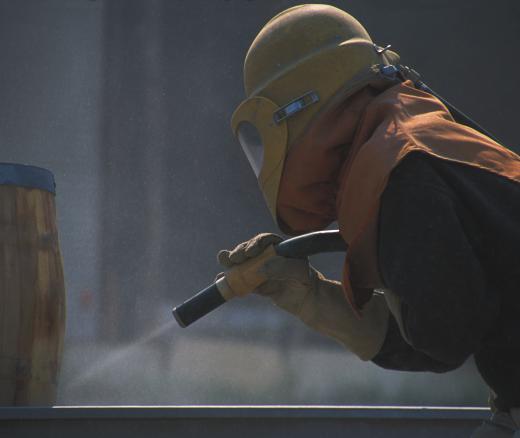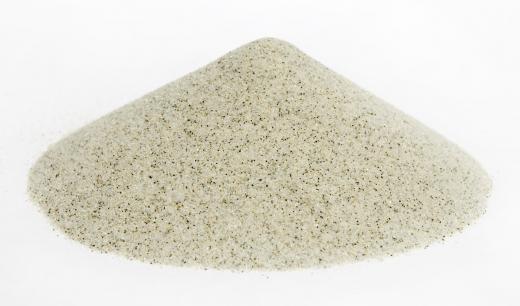Some of the best tips for sandblasting concrete are preparing the surface, securing any surrounding materials that may become damaged, and forming the proper blasting technique with the machine. The type of sand should also be considered before beginning a project. In addition, any nearby neighbors or onlookers should be cleared from the area for overall safety.
Sandblasting concrete is a common way of rejuvenating the surface after many years of unsightly stains, such as along a home's driveway. Preparing the concrete surface is an important step; any objects on the concrete need to be removed, such as tree branches or pebbles. Any debris left on the concrete during sandblasting will instantly become projectiles that can damage nearby property or people.

This form of concrete rejuvenation uses a machine that forces high speed sand across the targeted surface. As a result, any wood items or plants near the concrete should be covered with a tarp; the high speed sand can easily create small indentations in plant leaves or wood borders. It is good practice to remove any sensitive objects away from the sandblasting area, if possible. Some homeowners may even place plywood panels around the concrete area to prevent any sand from leaving the immediate area.

Another tip for sandblasting concrete is proper technique. A sandblaster's wand should be held at an angle to the concrete surface, preferably about 18 to 24 inches (46 to 61 cm) above the ground. The blasting process may require some practice at the beginning; the walking speed must be steady, but not too fast or else the blasting will not be as effective against the concrete.
Beginners that want to perform their own sandblasting concrete project should test a small area first. The person can choose a corner of the concrete that is slightly out of the way; he or she can practice blasting that area until it achieves the desired appearance. This practice area will prevent the beginner from inadvertently damaging the main portion of the concrete if the blasting technique is not yet mastered.
Most sandblasting concrete projects use silica sand as the main abrasive agent; other sands can be used, as long as they have a consistent size throughout the mixture. Additionally, the sand type should be relatively fine in dimension; larger sand granules will create bigger indentations in the concrete surface. The main goal of sandblasting is to remove a fine layer of concrete from the immediate surface, as opposed to gouging out large chunks of concrete with bigger sand granules.
